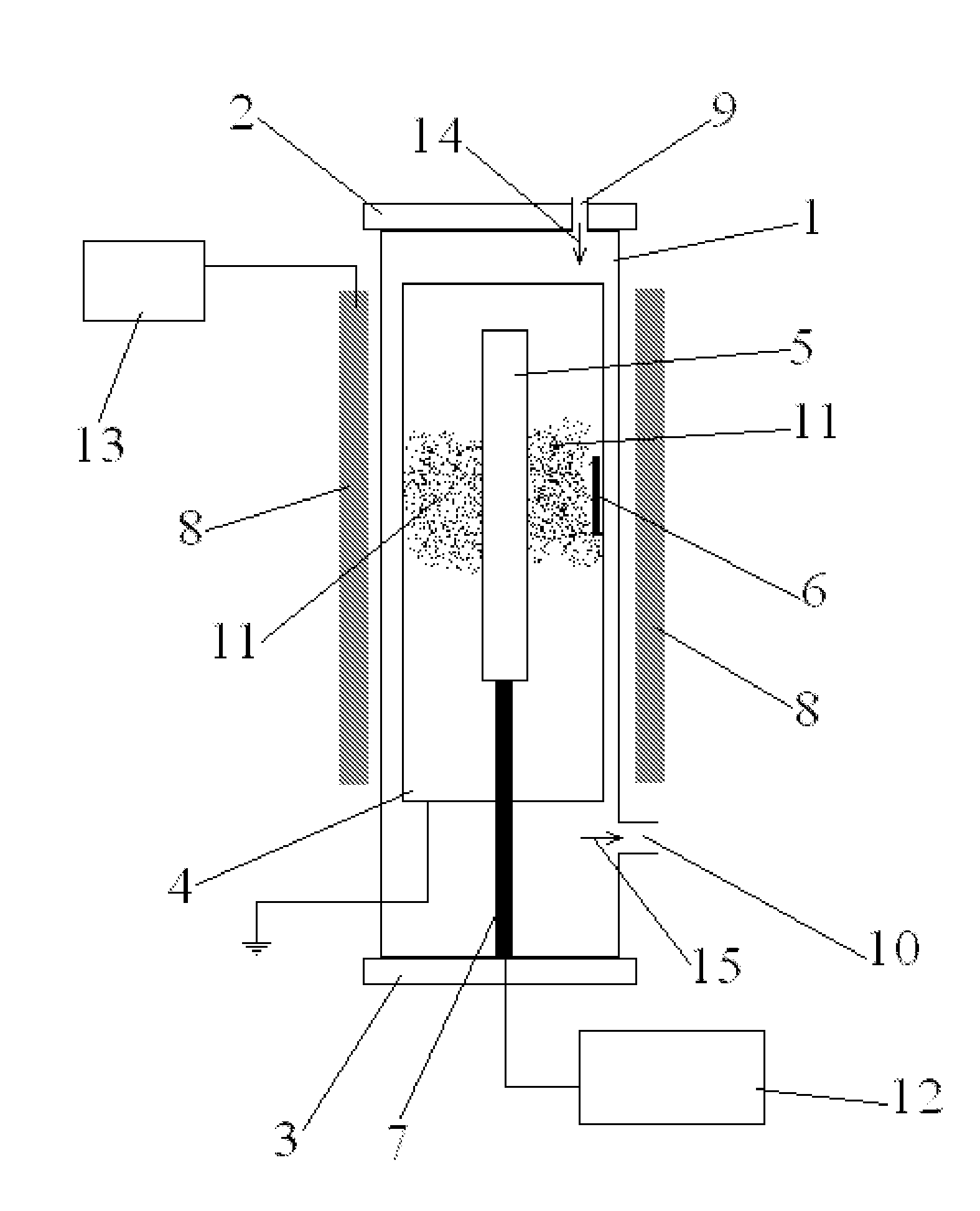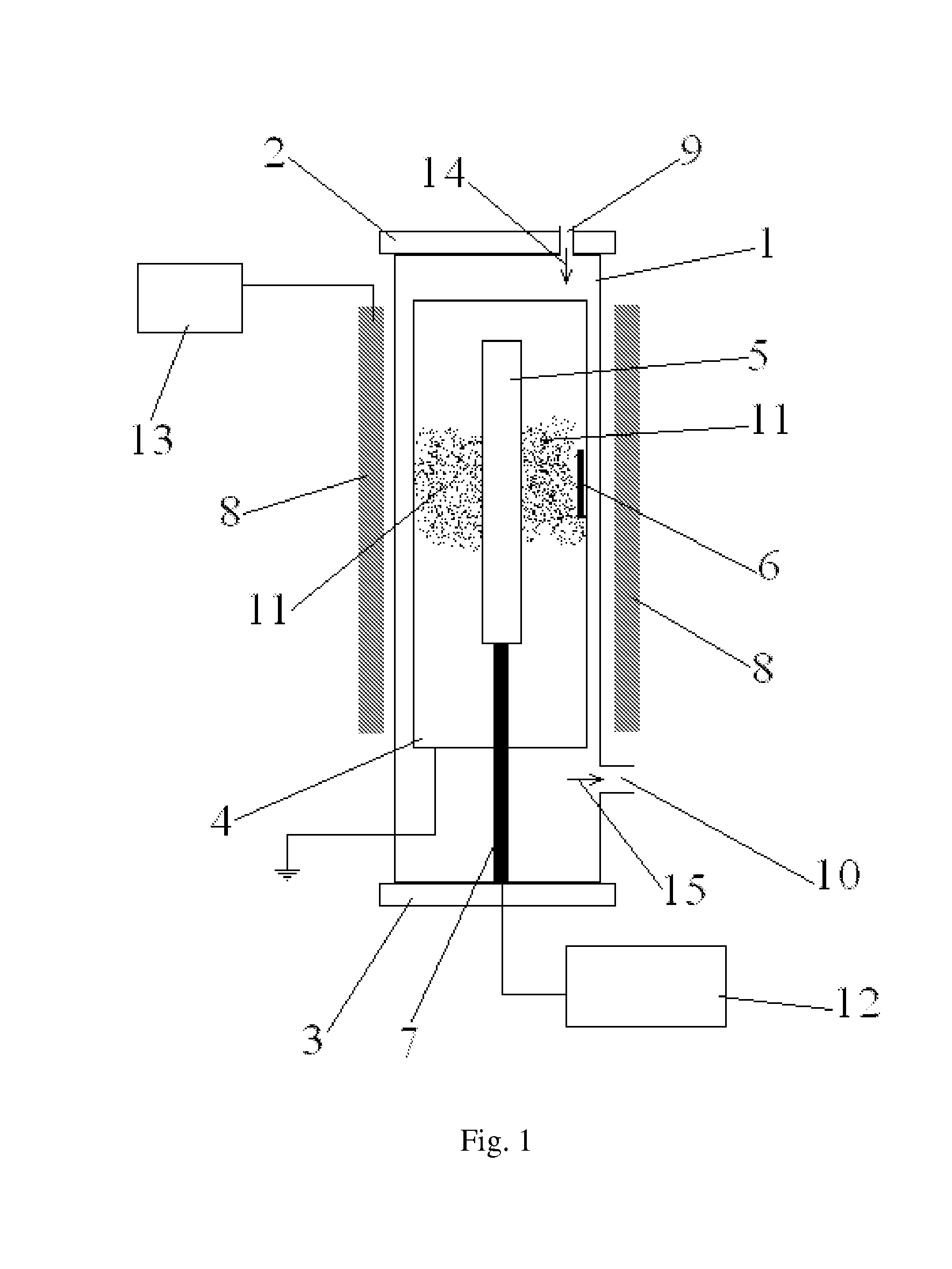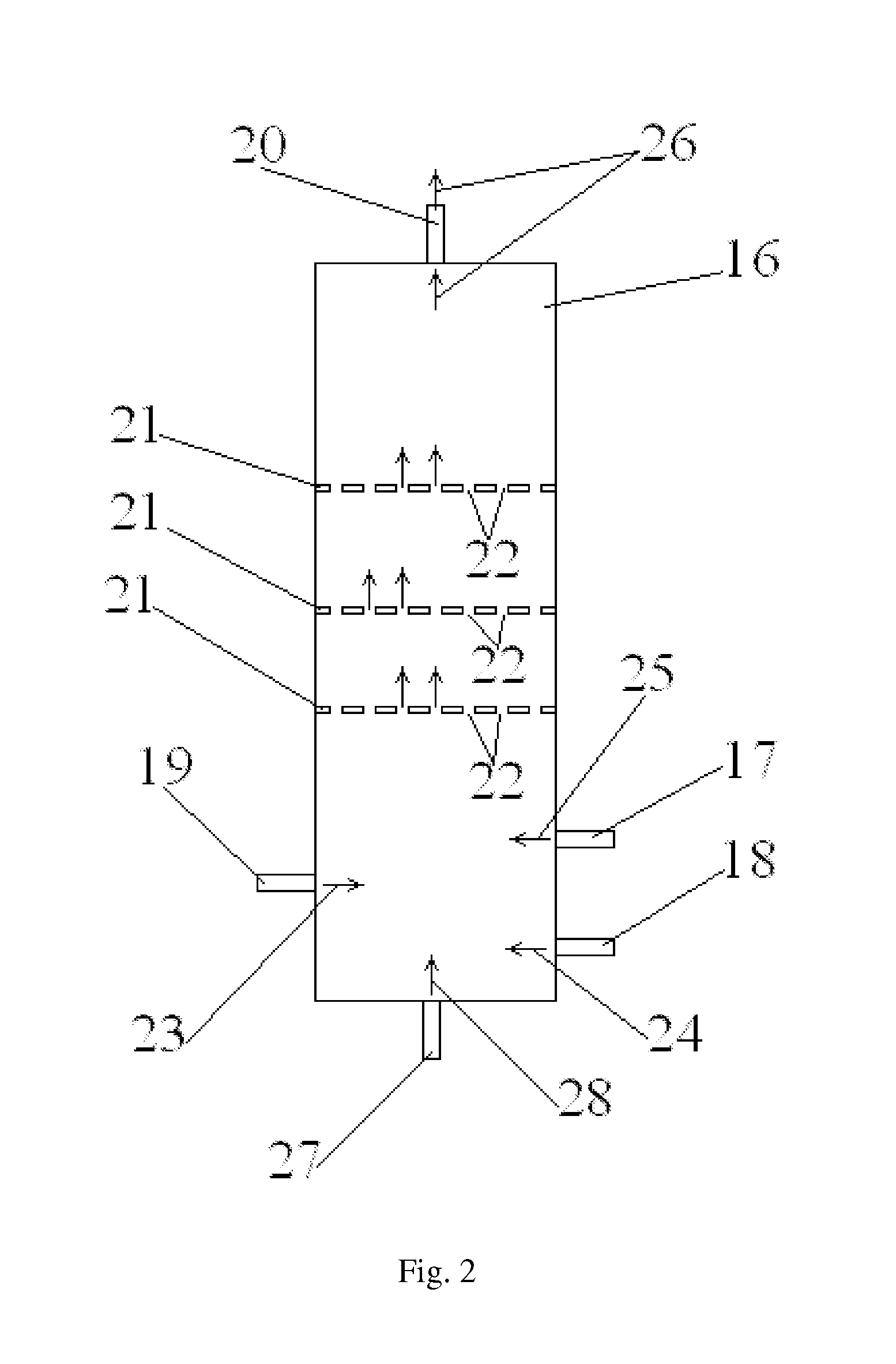Method for growing carbon nanowalls
a carbon nanowall and nanotube technology, applied in the direction of liquid-gas reaction process, chemical/physical/physicochemical process, chemical apparatus and processes, etc., can solve the problems of inability inability to use non-silicon substrates and glass as substrates to grow carbon nanowalls, and inability to make carbon nanowalls
- Summary
- Abstract
- Description
- Claims
- Application Information
AI Technical Summary
Benefits of technology
Problems solved by technology
Method used
Image
Examples
experiment 1
[0085] This experiment aims to mark the layer of catalyst aluminum (Al) on the glass base material 6 which is done by apparatus No. 1. In this experiment, base material 6 (substrate) is cleaned by using acetone, alcohol and distilled and deionized water for 10 minutes in ultrasonic bath to remove all impurities. Then base material 6 are settled in apparatus No. 1 on the anode 4 and cathode 5 iron is located on itself place. Then the chamber is blocked by using two flanges 2 and 3. The set will be prepared to make plasma. To do it, at the first, there should be the vacuum in the chamber 1 up to 10−5 torr and then to make plasma and ionized gases, Argon gas (Ar) is entered into the system through pore 9 and path 14 to reach the chamber's vacuum 0.03 torr. In this case, to concentrate the plasma in the plasma making region 11, there will be a field by using magnetic field 8 arranged by source 13. At same time, cathode 5 receives voltage by source 12 during 3 minutes and current 200 mA ...
experiment 2
[0086] this is same as experiment 1 except for using cathode 5 Iron (Fe) instead of using cathode 5 Iron.
experiment 3
[0087] in this experiment like experiment 1, same system is applied except for marking the second layer on the base material 6 to have the base materials 6 with two different catalyst layers. So base material 6 marked by iron is settled in apparatus No. 1 and then we continue operation same as experiment 1 to have the base material 6 with two different layers therefore we will have the base material 6 with two nano-layers (aluminum layer on the iron layer) in the presence of argon gas.
PUM
| Property | Measurement | Unit |
|---|---|---|
| height | aaaaa | aaaaa |
| length | aaaaa | aaaaa |
| diameter | aaaaa | aaaaa |
Abstract
Description
Claims
Application Information
 Login to View More
Login to View More - R&D
- Intellectual Property
- Life Sciences
- Materials
- Tech Scout
- Unparalleled Data Quality
- Higher Quality Content
- 60% Fewer Hallucinations
Browse by: Latest US Patents, China's latest patents, Technical Efficacy Thesaurus, Application Domain, Technology Topic, Popular Technical Reports.
© 2025 PatSnap. All rights reserved.Legal|Privacy policy|Modern Slavery Act Transparency Statement|Sitemap|About US| Contact US: help@patsnap.com



